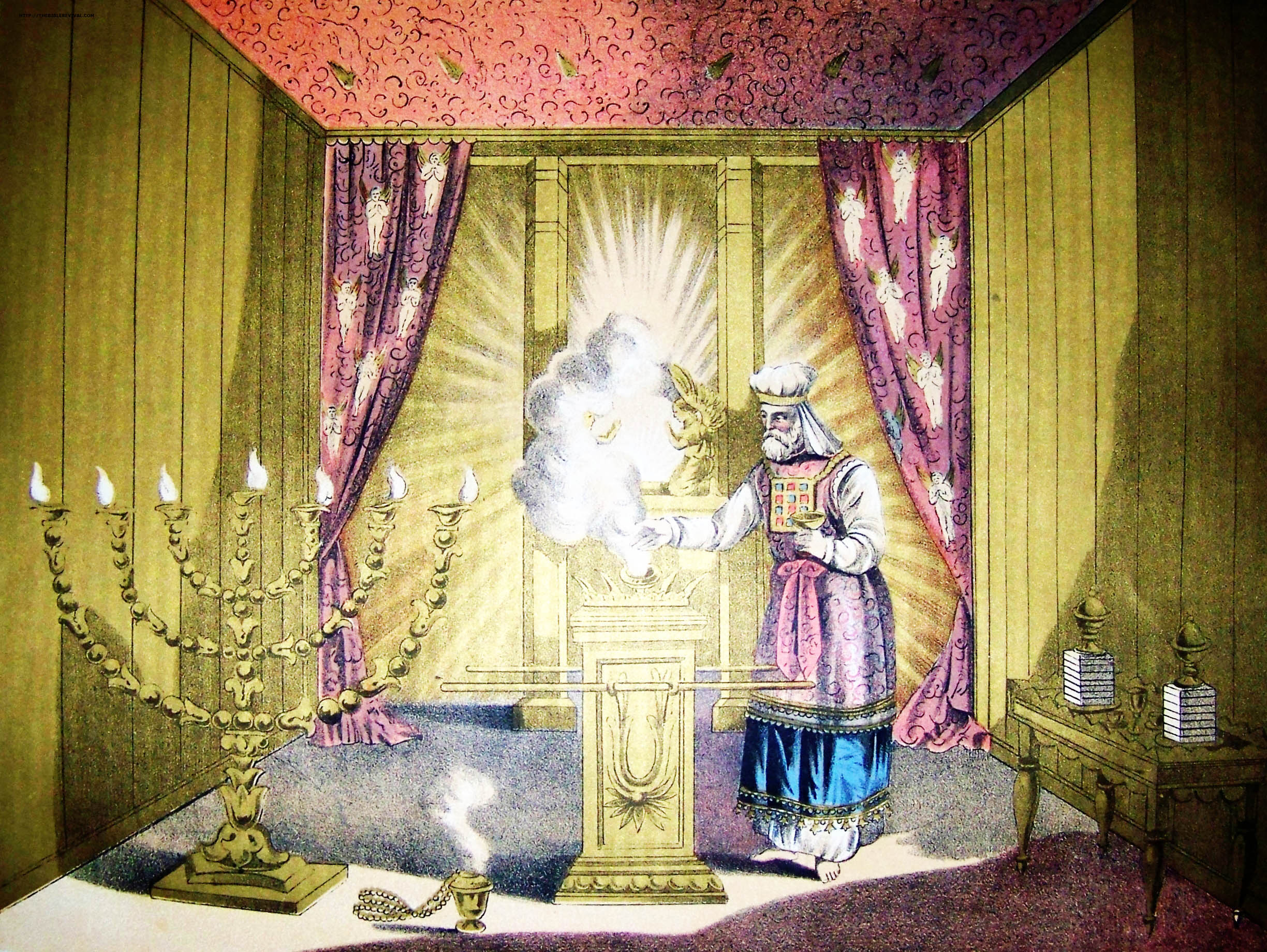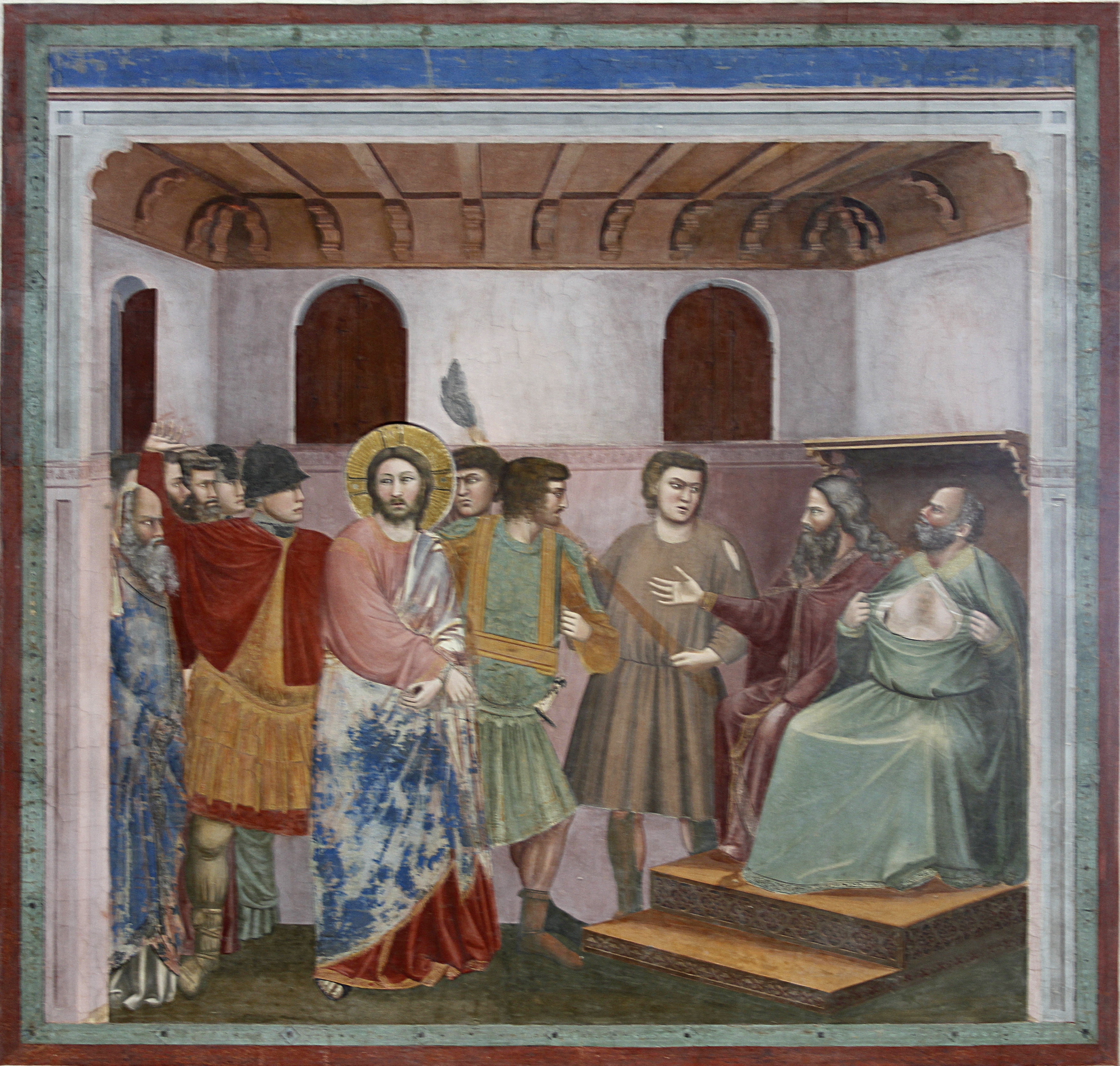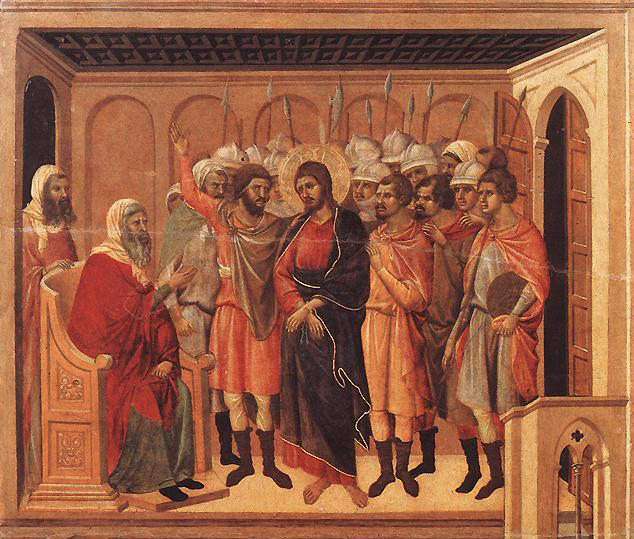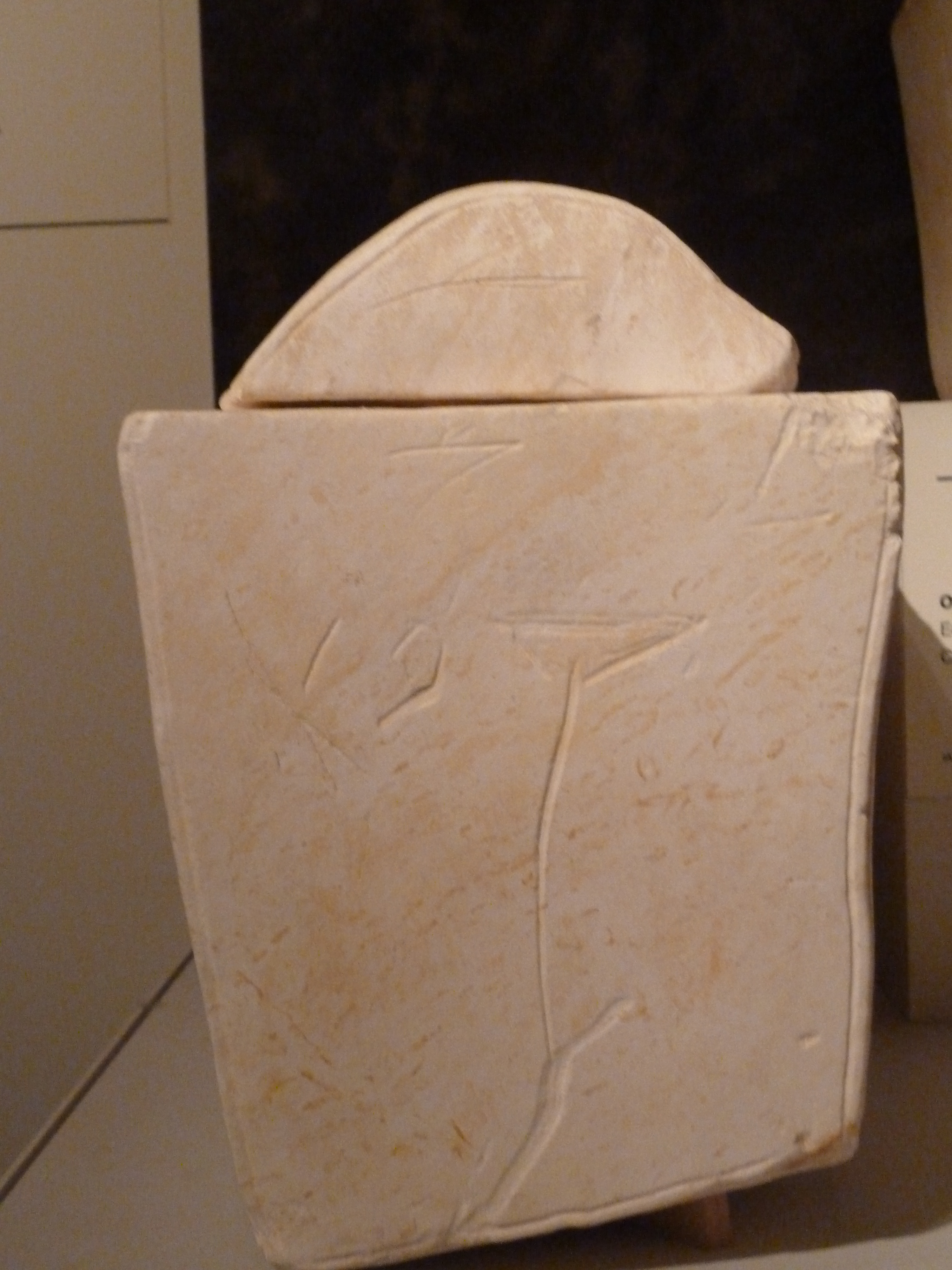|
Simon Ben Camithus
Simon ben Camithus () was a 1st-century High Priest of Israel, who was given the office by the Roman procurator Valerius Gratus and held the office from 17 AD to 18AD. Very little is known of him, however he is briefly mentioned in the Talmud as one of the seven sons of Kimchit to serve as high priest, and according to Josephus Flavius Josephus (; , ; ), born Yosef ben Mattityahu (), was a Roman–Jewish historian and military leader. Best known for writing '' The Jewish War'', he was born in Jerusalem—then part of the Roman province of Judea—to a father of pr ... was succeeded as High Priest by Joseph Caiaphas.N. L. Kuehl, 199A Book of Evidence(Chapter Four). References 1st-century high priests of Israel {{Judaism-bio-stub ... [...More Info...] [...Related Items...] OR: [Wikipedia] [Google] [Baidu] |
Second Temple Judaism
Second Temple Judaism is the Judaism, Jewish religion as it developed during the Second Temple period, which began with the construction of the Second Temple around 516 BCE and ended with the Siege of Jerusalem (70 CE), destruction of Jerusalem in 70CE. This period was marked by the emergence of multiple religious currents as well as extensive cultural, religious, and political developments among Jews. It saw the progression of the development of the Hebrew Bible canon, Hebrew Bible canon, the synagogue, and Jewish eschatology. Additionally, the Early Christianity, rise of Christianity began in the final years of the Second Temple period. According to Jewish tradition, Prophets in Judaism, authentic prophecy (, ) ceased during the early years of the Second Temple period; this left Jews without their version of divine guidance at a time when they felt most in need of support and direction. [...More Info...] [...Related Items...] OR: [Wikipedia] [Google] [Baidu] |
High Priest Of Israel
In Judaism, the High Priest of Israel (, lit. ‘great priest’; Aramaic: ''Kahana Rabba'') was the head of the Israelite priesthood. He played a unique role in the worship conducted in the Tabernacle and later in the Temple in Jerusalem, as well as in some non-ritual matters. Like all priests, he was required to be descended from Aaron (the first biblical priest). But unlike other priests, the high priest followed more restrictive laws, wore unique priestly garments, and was the only priest allowed to perform certain ceremonies. Titles The high priest is referred to by a number of titles in the Hebrew Bible; the title ''kohen gadol'' did not become dominant until well into the Second Temple period. In addition to the title of "great priest" (''kohen gadol'') which later became the standard Hebrew title, the term "head priest" (''kohen harosh''; ) was used, as was "anointed priest" (''kohen mashiach''; )., , The Torah sometimes uses longer descriptions: "the great priest ... [...More Info...] [...Related Items...] OR: [Wikipedia] [Google] [Baidu] |
Caiaphas
Joseph ben Caiaphas (; c. 14 BC – c. 46 AD) was the High Priest of Israel during the first century. In the New Testament, the Gospels of Gospel of Matthew, Matthew, Gospel of Luke, Luke and Gospel of John, John indicate he was an organizer of the plot to kill Jesus. He is portrayed as presiding over the Sanhedrin trial of Jesus. The primary sources for Caiaphas' life are the New Testament and the writings of Josephus. The latter records he was made high priest by the Roman procurator Valerius Gratus after Simon ben Camithus had been deposed. Etymology The Babylonian Talmud (Yevamot 15B) gives the family name as Kuppai, while the Jerusalem Talmud (Yevamot 1:6) mentions ''Nekifi''. The ''Mishnah'', Parah 3:5, refers to the family name as hakKof (perhaps "the Monkey", a play on his name for opposing the Pharisees). The family name ''Caiaphas'' קַיָּפָה has a few possible origins: * from קוּפָּה 'basket', 'tub', verbalized as קִיֵּף , whence קַיָּף meani ... [...More Info...] [...Related Items...] OR: [Wikipedia] [Google] [Baidu] |
Eleazar Ben Ananus
Annas (also Ananus or Ananias;Goodman, Martin, "Rome & Jerusalem", Penguin Books, p.12 (2007) , ; , ; 23/22 BC – death date unknown, probably around AD 40) was appointed by the Roman legate Quirinius as the first High Priest of the newly formed Roman province of Judaea in AD 6 – just after the Romans had deposed Archelaus, Ethnarch of Judaea, thereby putting Judaea directly under Roman rule. Annas appears in the Gospels and Passion plays as a high priest before whom Jesus is brought for judgment, prior to being brought before Pontius Pilate. The sacerdotal family The terms of Annas, Caiaphas, and the five brothers are: Ananus (or Annas), son of Seth (6–15) Annas served officially as High Priest for ten years (AD 6–15), when at the age of 36 he was deposed by the procurator Valerius Gratus. Yet while having been officially removed from office, he remained as one of the nation's most influential political and social individuals, aided greatly by the fact that his five ... [...More Info...] [...Related Items...] OR: [Wikipedia] [Google] [Baidu] |
Joshua
Joshua ( ), also known as Yehoshua ( ''Yəhōšuaʿ'', Tiberian Hebrew, Tiberian: ''Yŏhōšuaʿ,'' Literal translation, lit. 'Yahweh is salvation'), Jehoshua, or Josue, functioned as Moses' assistant in the books of Book of Exodus, Exodus and Book of Numbers, Numbers, and later succeeded Moses as leader of the Israelite tribes in the Book of Joshua of the Hebrew Bible. His name was Hoshea ( ''Hōšēaʿ'', Literal translation, lit. 'Save') the son of Nun (Bible), Nun, of the tribe of Ephraim, but Moses called him "Yehoshua" (translated as "Joshua" in English),''Bible'' the name by which he is commonly known in English. According to the Bible, he was born in Ancient Egypt, Egypt prior to the Exodus. The Hebrew Bible identifies Joshua as one of The Twelve Spies, the twelve spies of Israel sent by Moses to explore the land of Canaan. In and after the death of Moses, he led the Israelite tribes in the conquest of Canaan, and allocated lands to the tribes. According to chronology ... [...More Info...] [...Related Items...] OR: [Wikipedia] [Google] [Baidu] |
Valerius Gratus
Valerius Gratus was the 4th Roman Prefect of Judaea province under Tiberius from 15 to 26 AD. History He succeeded Annius Rufus in 15 and was replaced by Pontius Pilate in 26. The government of Gratus is chiefly remarkable for the frequent changes he made in the appointment of the high-priesthood. He deposed Ananus, and substituted Ishmael ben Fabus, then Eleazar, son of Arianus, then Simon, son of Camith, and lastly Joseph Caiaphas, the son-in-law of Ananus.''Antiquities of the Jews'' xviii. 2. §2. In popular culture In the book '' Ben-Hur: A Tale of the Christ'' and its derived films, Gratus is almost killed by a roof tile which accidentally falls from the home of Judah Ben-Hur, which prompts all subsequent events of the story. In the novel, Gratus is portrayed as a corrupt governor who acted against the Jews by removing the rightful head priest of the Temple, Hannas, and replacing him with a Roman puppet, Ishmael. See also * Gens Valeria * Roman Procurator coinage ... [...More Info...] [...Related Items...] OR: [Wikipedia] [Google] [Baidu] |
Anno Domini
The terms (AD) and before Christ (BC) are used when designating years in the Gregorian calendar, Gregorian and Julian calendar, Julian calendars. The term is Medieval Latin and means "in the year of the Lord" but is often presented using "our Lord" instead of "the Lord", taken from the full original phrase "", which translates to "in the year of our Lord Jesus Christ". The form "BC" is specific to English language, English, and equivalent abbreviations are used in other languages: the Latin (language), Latin form, rarely used in English, is (ACN) or (AC). This calendar era takes as its epoch (date reference), epoch the traditionally reckoned year of the annunciation, conception or Nativity of Jesus, birth of Jesus. Years ''AD'' are counted forward since that epoch and years ''BC'' are counted backward from the epoch. There is no year zero in this scheme; thus the year AD 1 immediately follows the year 1 BC. This dating system was devised in 525 by Dionysius Exiguus but was ... [...More Info...] [...Related Items...] OR: [Wikipedia] [Google] [Baidu] |
Talmud
The Talmud (; ) is the central text of Rabbinic Judaism and the primary source of Jewish religious law (''halakha'') and Jewish theology. Until the advent of Haskalah#Effects, modernity, in nearly all Jewish communities, the Talmud was the centerpiece of Jewish culture, Jewish cultural life and was foundational to "all Jewish thought and aspirations", serving also as "the guide for the daily life" of Jews. The Talmud includes the teachings and opinions of thousands of rabbis on a variety of subjects, including halakha, Jewish ethics, Jewish philosophy, philosophy, Jewish customs, customs, Jewish history, history, and Jewish folklore, folklore, and many other topics. The Talmud is a commentary on the Mishnah. This text is made up of 63 Masekhet, tractates, each covering one subject area. The language of the Talmud is Jewish Babylonian Aramaic. Talmudic tradition emerged and was compiled between the destruction of the Second Temple in 70 CE and the Arab conquest in the early seve ... [...More Info...] [...Related Items...] OR: [Wikipedia] [Google] [Baidu] |
Flavius Josephus
Flavius Josephus (; , ; ), born Yosef ben Mattityahu (), was a History of the Jews in the Roman Empire, Roman–Jewish historian and military leader. Best known for writing ''The Jewish War'', he was born in Jerusalem—then part of the Judaea (Roman province), Roman province of Judea—to a father of Kohen, priestly descent and a mother who claimed Hasmonean royal ancestry. He initially fought against the Roman Empire during the First Jewish–Roman War as general of the Jewish forces in Galilee, until surrendering in AD 67 to the Roman army led by military commander Vespasian after the six-week siege of Yodfat. Josephus claimed the Messiah in Judaism, Jewish messianic Bible prophecy, prophecies that initiated the First Jewish–Roman War made reference to Vespasian becoming Roman emperor. In response, Vespasian decided to keep him as a slave and presumably interpreter. After Vespasian became emperor in AD 69, he granted Josephus his freedom, at which time Josephus a ... [...More Info...] [...Related Items...] OR: [Wikipedia] [Google] [Baidu] |
Joseph Caiaphas
Joseph ben Caiaphas (; c. 14 BC – c. 46 AD) was the High Priest of Israel during the first century. In the New Testament, the Gospels of Matthew, Luke and John indicate he was an organizer of the plot to kill Jesus. He is portrayed as presiding over the Sanhedrin trial of Jesus. The primary sources for Caiaphas' life are the New Testament and the writings of Josephus. The latter records he was made high priest by the Roman procurator Valerius Gratus after Simon ben Camithus had been deposed. Etymology The Babylonian Talmud (Yevamot 15B) gives the family name as Kuppai, while the Jerusalem Talmud (Yevamot 1:6) mentions ''Nekifi''. The ''Mishnah'', Parah 3:5, refers to the family name as hakKof (perhaps "the Monkey", a play on his name for opposing the Pharisees). The family name ''Caiaphas'' קַיָּפָה has a few possible origins: * from קוּפָּה 'basket', 'tub', verbalized as קִיֵּף , whence קַיָּף meaning 'basket maker', or a worker utilizing baskets s ... [...More Info...] [...Related Items...] OR: [Wikipedia] [Google] [Baidu] |








